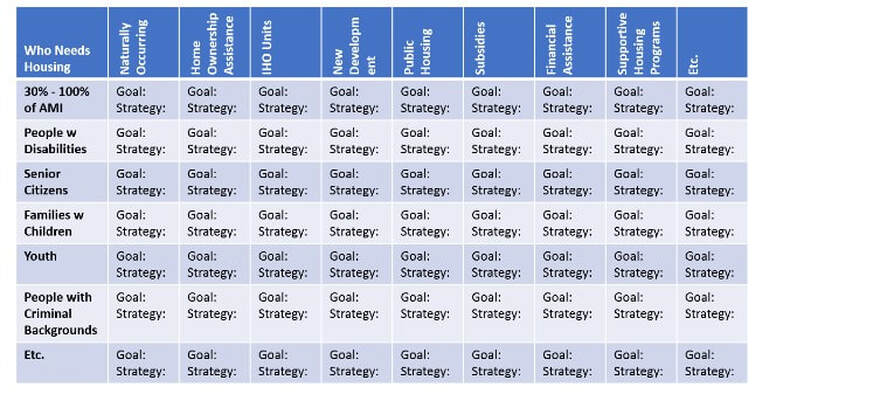|
In the discussions that Joining Forces has been having among its members, one of the key issues is the definition of "affordable housing." This is important, because the answer is different for different people, and to address the overall need, we need to include solutions for all the subsets of need in our planning. "Affordable housing" is considered to be housing that costs no more than 30% of the resident's income. However, this is not enough of a definition, because:
Defining Need According to People's Situations There IS "affordable housing" available for some people at most income levels. However, what that housing is and whether it's accessible varies dramatically depending on a person's situation and the reason for his or her lack of sufficient income to pay for housing. Therefore, one of the ways we need to define affordability is according to who needs the affordability. We feel that a plan for affordability needs to consider the needs of and provide solutions for all the following:
An Integrated Plan We would like to see a planning approach in place that will integrate information on who needs housing with possible housing solutions so that the City can work on multiple housing needs and solutions at a time. One way of doing this would be to create a matrix with who needs housing along one axis and housing solutions along another, with a goal and strategy for achieving that goal in each cell of the matrix. In its white paper in the Council packet for the October 30, 2017, City Council meeting, City housing staff included a description of the need in Evanston based on area median income (see pages 10 - 16 of the packet). They also described and quantified the needs for many of the groups of people who need housing, as well as defining the housing solutions available. What has not been done yet is a plan that includes specific goals related to these needs and solutions.
Staff will be presenting an additional needs assessment to the Council, we hope, in the upcoming meeting on affordable housing on July 30. We hope that they are on the way to starting the process of breaking down the information they have into actionable items that will support development of an actionable plan.
0 Comments
Leave a Reply. |
|
© COPYRIGHT 2018. ALL RIGHTS RESERVED.
|





